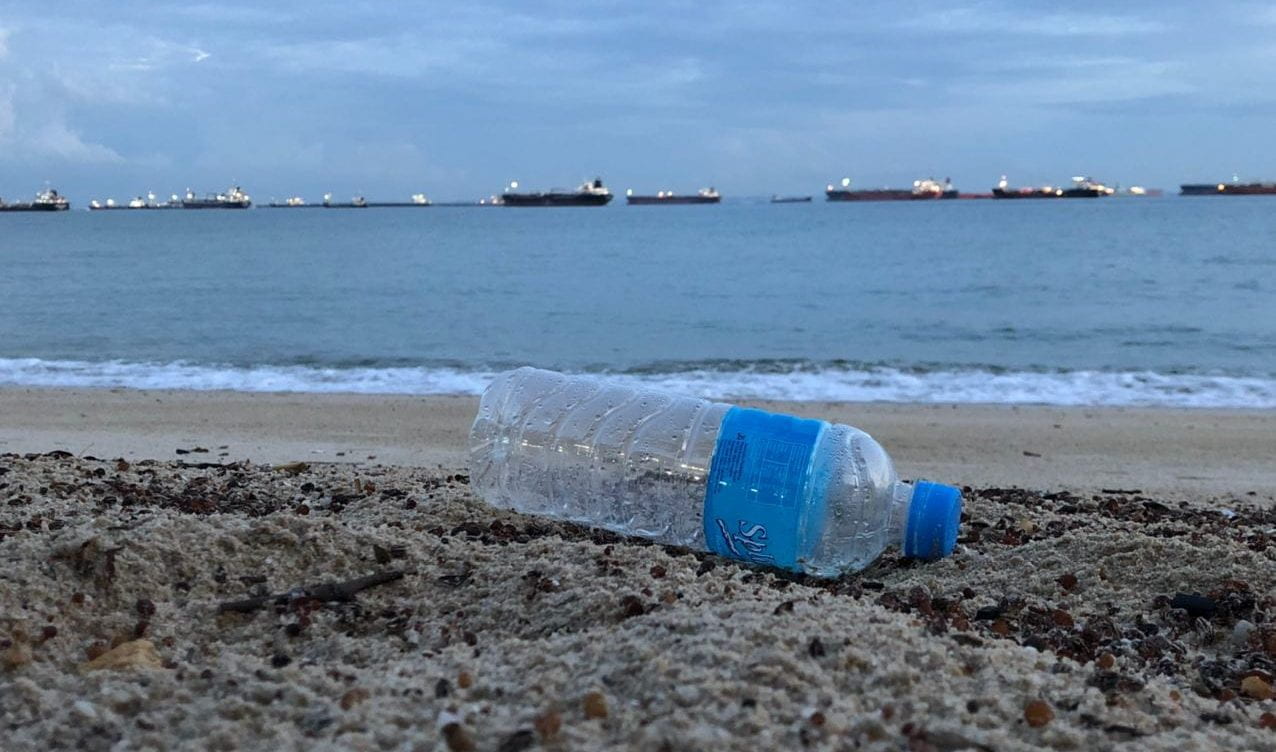Styrofoam is usually made from a material known as polystyrene and is also a type of plastic that is commonly used as a packaging material due to its soft, almost “foam” like nature as suggested by its name.

Being cheap and lightweight it is commonly used to make disposable items and is a large part of the litter found in the ocean and on the beach. US coastal cleanup results from 1999 showed that 11% (461,124 pieces) of all litter from the beach was styrofoam.
Styrofoam is also non-biodegradable, meaning that it will not break down naturally, causing styrofoam to float endlessly in the ocean until they are removed either by humans or animals.

What makes styrofoam even harder to clean up from my own experience is the fact that it usually breaks down into smaller pellets, making having to pick up the tiny, individual pieces much more tedious.
These small pellets can also cause harm to animals when they mistake them for food pieces. A study conducted in 2002 showed that there were plastic particles found in the stomachs of 86% of sea turtles, 44% of seabirds, and 43% of all marine mammals.
Find out more about the dangers of plastic in my previous post here!
In other posts, we have explored where the litter comes from. However, today lets instead take a look at why styrofoam was invented and if there still a need for it today.
The compound polystyrene was first discovered by Eduard Simon in 1839 by distilling the resin of the oriental sweetgum tree, but styrofoam (foamed polystyrene) was only invented in the 1940s by Ray McIntire of the Dow Chemical Company. Compared to normal polystyrene, styrofoam was far less brittle and 30 times lighter and at that time was used to build ships, and as an insulator.
The history of styrofoam manufacturing has also been full of controversy. The process of manufacturing styrofoam initially involved the use of ozone-depleting chlorofluorocarbons, which have now been phased out, and also styrene which has been believed to be carcinogenic.
In present times, just in the United States alone, 3 million tons of polystyrene are produced each year with 40% being used for food, 19% used for packaging and other uses include construction, electronics, and furniture.

Why is it that we are so dependent on styrofoam?
Well as mentioned earlier, it is one of the cheapest materials that can be used as insulators or protection, and companies that only care about profits choose to use it. Other more eco-friendly types of packaging do exist such as recyclable papers and molded fiber however none can beat the price and utility of styrofoam.
Despite our overreliance on styrofoam in the present, there is hope that it will be reduced in the future. According to IBISWorld, the revenue for polystyrene has been decreasing from 2015 to 2020, despite the current COVID-19 pandemic where more and more people are taking food away, due to a fall in demand.
Countries like Costa Rica have also completely banned the use of styrofoam completely from 2021, showing that some governments have already recognised the seriousness of styrofoam pollution.
The reduction of styrofoam use is an important step to take not only in the prevention of litter in the ocean but the protection of our environment as a whole, so the next time you consider taking a styrofoam cup, think twice and remember about the problem of sinister styrofoam.

Hello Mark! Thank you for the interesting read :0 Considering that Singapore is rather dependent on trade and exports, I believe that styrofoam would be a more cost-effective and practical material especially for insulation and protective reasons for exports. I was just wondering about your thoughts on whether Singapore is ready and is able to afford the switch from styrofoam packaging/containers to a more eco-friendly substitute? Thank you and hope to hear from you soon :)
Hi Amira,
I feel that the mindsets of many Singaporeans are quite ready to make the switch to these alternatives, especially the younger generation. In 2019, it was the year of zero waste in Singapore, with the government continually pushing zero-waste alternatives such as bring your own bag and container initiatives.
However, the issue I feel is not with the individual, but with companies and organizations that are so used to styrofoam, and the convenience and low price it brings. There needs to be clearer signaling from the consumers to these companies that they do not wish to use disposable tableware anymore before the firms can make any significant decisions. Then again for this to happen, all the consumers need to agree to stop the use of styrofoam so at the end of the day it is a never-ending cycle that needs one party to commit to stop using styrofoam before any significant changes can occur in the long run.
There is hope for the future though for a reduction in the amount of styrofoam used here, as seen in a 2016 discussion in parliament about the possible ban on styrofoam, that even though did not actually happen, but shows positive signs that the government is taking the environment into account when it comes to their decisions.
Thanks!
Mark